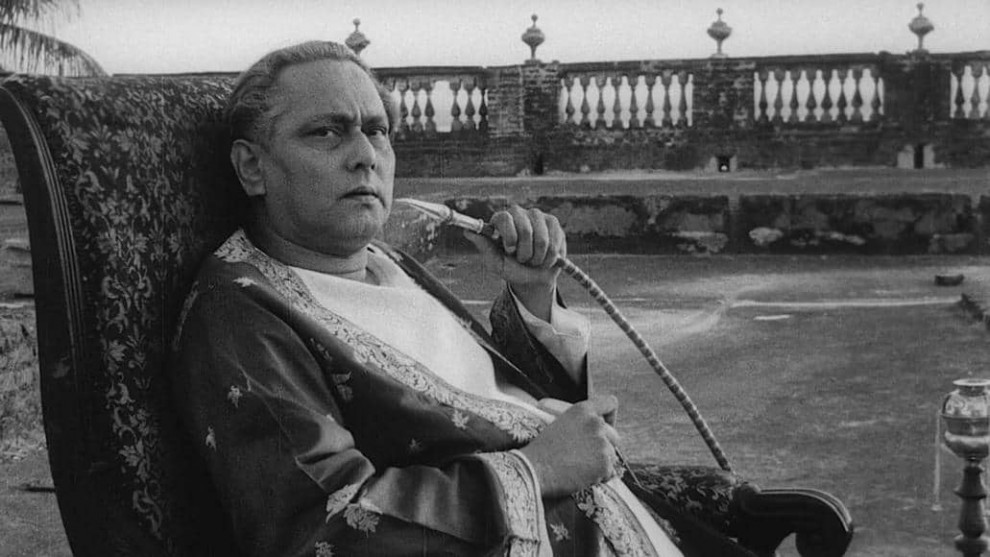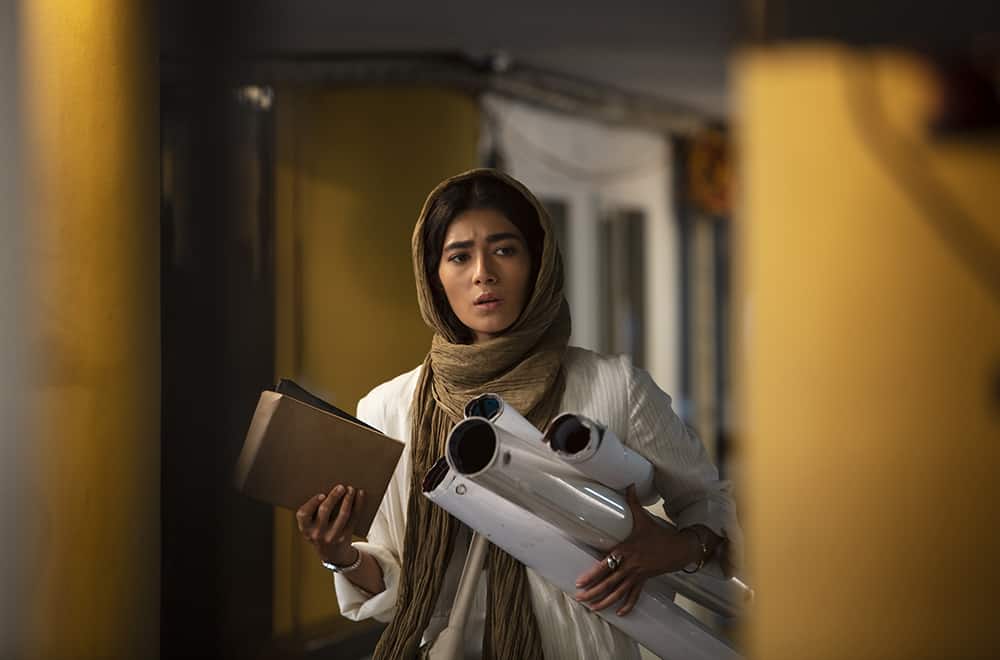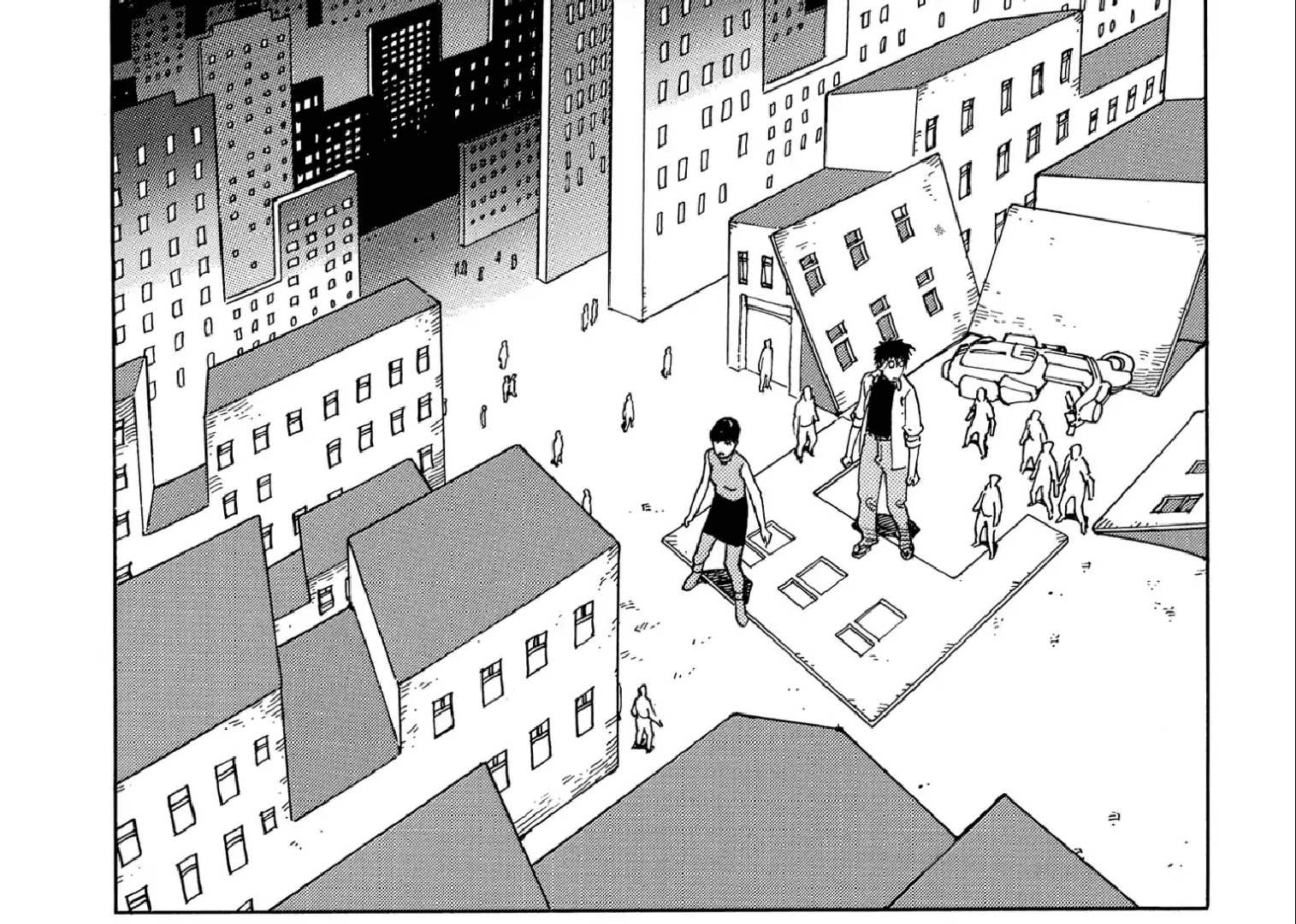“What would happen if we all left?”
In the career of Indian director Satyajit Ray, “The Music Room” can be regarded as something of a change. While the statement can be made in general for many films in the career of a filmmaker for Ray it served as a re-orientation towards what the film industry of his home country thought was the key to a commercially successful film, something Ray wanted to make after the second part of his famous Apu-trilogy was not as well-received among audiences as he had hoped.
Because his first film, “Pather Panchali”, would not include either dancing or singing, it received little to no backing from the Indian film industry, especially when it was later shown in the Cannes Film Festival in 1956. “The Music Room”, as the title already suggests, however, included all of these elements as well as a popular actor of the time (Chhabi Biswas) and a setting deeply-rooted within the history of his home country. As Ray's biographer Andrew Robinson states, it was essential to the director not to have music or dancing as mere decorum within his picture, but rather core features for the plot and/or the characters of the film. Since he was a music lover himself, with a long line of patrons of the arts in his family tree, Ray had inherited a deep understanding of Western music, especially classics such as Beethoven, but also of traditional Indian music, knowledge which would prove to be quite useful especially when he found out Biswas indeed knew nothing about it lacking any feeling for its rhythm.
But “The Music Room” is not just about music, it is mostly a look back to a version of India of the past, one which lacks any kind of nostalgia. It is a picture of the age of the moguls, the feudal classes, their relationship to their subjects and the property they own.
Buy This Title
Bishwambhar Roy (Biswas) is an impoverished landlord (zamindar), spending the end of his days on his estate, not joining in on life outside of it. His only contact to the outside world is his servant Ananta (Kali Sarkar) and his steward Taraprasanna (Tulsi Lahiri). Hearing the sounds of a shehnai from the house of his neighbor, Mahim Ganguli (Gangapada Bose), a wealthy businessman preparing the upcoming celebration for his son's initiation, he remembers the days before he became a recluse to his subjects.
Four years ago, his son Khoka (Pinaki Sen Gupta) and his wife Mahamanya (Padma Devi) set on a journey to her sick father. Since her husband is mostly occupied with rather costly celebrations in his beloved music room, to which he invites musicians from all over India, the financial situation of the estate is troubling. Nevertheless, as the two are gone, Lord Roy again invites his friend to another music performance, but as thunderclouds start gathering outside, the evening is about to take a dramatic turn.
Before his son and wife are about to leave, Roy and his son are in his room making music While his father plays the sitar, Khoka practices the recital of the song, sharing the same concentrated look on his face as his father. Both men share a moment together and from the looks of this, it is likely some kind of ritual between the two , especially since Mahamanya scolded her husband, for his son has inherited all of his vices, his love for music and his apparent disinterest in engaging in his studies, his estate of the subjects on it. Roy, of course, ignores these arguments, seeing his son's predilection for music as part of his inheritance as future patron of the arts, like his ancestors whose stern faces can be seen hanging from each of the walls of Roy's beloved music room.

Even though one might consider his love for music a grand gesture given his status, Roy's appreciation goes deeper, is more personal than one might think. But it is not just the music, it is just as much the environment, the beautiful chandelier, the expensive carpets on the floor and the various paintings on the wall showing Roy's and Khoka's ancestors in grand gestures associated with power, control and status. The room carries a reassurance, a security Roy's wealth and reputation cannot end, as he is one in line with those men on the walls, he is the owner of all these things of beauty and, most importantly, he has paid the artist to perform for him and his illustrious group of friends. Music is essential for that feeling, for that luxurious form of relaxation, of being captivated by the stories the musicians have to tell through their voices, their instruments and their dances. It is a luxury which is worth every piece of land, money and jewelry one has it his disposal.
However, it is obvious this demonstration of opulence has a more lasting price. As his land is no longer valuable, with the river Ganges taking away more and more of it and new forms of capital having entered the land with people such as Ganguli making business with the British rulers, the glory of these days is shining gloriously in Lord Roy's memory or the shiny patina on the paintings in the music room. Besides, as his wife and his steward remind him, there is a world outside of the estate, people which he could be able to help, land he could be taken more care of as well as his family. Perhaps in some ways ironic is the fact the musicians he has seen performing in his music room also speak of this world, the longing for the love of another human being, but despite his love for the craft, the message does not seem to find its way to Roy. Similar to Charles Foster Kane in Orson Welles' “Citizen Kane”, Lord Roy sits at the top of his estate when his servant brings his hookah, a lonely emperor who has become the material for legends among his subjects.

However, the new form of ruler, the businessman, is equally shown without any kind of sympathy in Ray's film. Being rather ignorant towards the arts, Mahim Ganguli seems to be interested exclusively in material gain and progress, suggested by the installation of electricity in his home – the loud noise of the generator frequently disturbs Lord Roy while he listens to music – and his car, both of which seem strangely anachronistic within the landscape of the film. The only difference in the eyes of the people is how Roy still represents the former glory of the moguls, while Ganguli shows the face of their rulers, a fact he complains about when he talks about his car being scratched and damaged by them, while Roy's servants are heartily welcomed among them.
Satyajit Ray's script, the images of Subrata Mitra and Vilayat Khan's score show a page within the Indian history book, a music room which is no longer operated, a museum piece is in many ways, but one which carries fond memories for some still. Even though the rulers of this time are not shown in the most positive of lights, “The Music Room” is nevertheless a human portrayal, a dramatic recount of the flaws within this system, all the more powerful through the performance of Chhabi Biswas, an actor able to play the connoisseur of music but also the proud father, a man blind to the damage he causes until it is too late.
“The Music Room” is a film about looking back to the past of a man, a story about loss, passion but also a time, which is inevitably lost with only specific items as witnesses of these days. Supported by a wonderful eye for details, great performances and masterful use of music by Vilayat Khan's score as well as the various musicians featured in the scenes “The Music Room” offers the story of a man who desperately wants to bring back a certain time, a memory of glory in which the music never seemed to stop. But in the end, it just had to.
Sources:
1) For the Love of Music (2011) an interview with Andrew Robinson
2) Kemp, Philip (2017) Distant Music
https://vimeo.com/218490904
















